Attitude is Everything at a Tradeshow
A Positive Attitude Makes a Difference to the Exhibitors
A few weeks ago, I had an opportunity to supervise set up of an exhibit for one of my clients at the National Space Symposium in Colorado Springs. Now this is not a large show, and the exhibits aren’t massive, but the show was pretty cool.
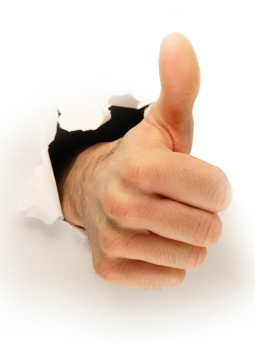 The products that were being shown were very interesting in their own right, and the fact that the show was held at the Broadmoor Hotel (a world famous 5-star facility) also contributed to the experience. I don’t think the Broadmoor hosts very many trade shows, but in any case, this one has got to be the largest one they do host. The attendees are predominately military or government employees. The exhibit space is spread across two halls, but naturally, all of the exhibitors all want to crowd into the main exhibit hall.
The products that were being shown were very interesting in their own right, and the fact that the show was held at the Broadmoor Hotel (a world famous 5-star facility) also contributed to the experience. I don’t think the Broadmoor hosts very many trade shows, but in any case, this one has got to be the largest one they do host. The attendees are predominately military or government employees. The exhibit space is spread across two halls, but naturally, all of the exhibitors all want to crowd into the main exhibit hall.
While the hotel and the view of Pike’s Peak is beautiful, in my opinion the most impressive thing about this show was the attitudes of the people working on the showfloor. As set up began, we were all crushed into the main hall. Moving a crate to get to the lid meant moving several crates. The general services contractor (Freeman) struggled to get crates delivered and empties removed. Even in the face of all these difficulties, there was very little stress. I had a problem with the rental carpet that caused a minor delay, which was corrected immediately. The spirit of cooperation and productivity was amazing. Everyone worked hard, was courteous and friendly, and offered to help without being asked no matter which company they were working for.
No one was walking the aisles telling us what we were and weren’t allowed to do. The entire workforce seemed to be thankful for the opportunity to have the work and helped out whenever possible.
I am not sure why attitudes seemed so upbeat, but I can tell you that it makes a big difference to the exhibitors. As cities like Chicago try to find ways to retain trade shows, perhaps they should consider what they can do to change the attitudes of all workers on the show floor.
Scheduling Tradeshow Staff
Scheduling and keeping track of booth staffers is a vital bit of information that should not be overlooked during tradeshow preparation. Planning should begin well in advance of the show.
A master schedule binder should be created that includes:
- All planned meetings in the booth, including times and attendees
- A list of booth staffer responsibilities, assigning tasks, and a designated time to perform tasks
- A detailed log of times staffers will be in the booth, on break, or dining.
 This binder will be most useful if it is kept at the main reception counter for any staffer to view. A master log of meetings should indicate who the attendee plans to see, and what will be discussed. If a private or semi-private meeting is in order, a conference room or sit down area should be available for guests and staff. Log these times accordingly, and block out conference rooms for this time slot. Some exhibit managers will even go as far to know the potential dollar amount in revenues each and every planned visitor could mean to the company. This is incredibly valuable information to share with all booth staffers, so when an important guest walks in, they are treated cordially and respectfully.
This binder will be most useful if it is kept at the main reception counter for any staffer to view. A master log of meetings should indicate who the attendee plans to see, and what will be discussed. If a private or semi-private meeting is in order, a conference room or sit down area should be available for guests and staff. Log these times accordingly, and block out conference rooms for this time slot. Some exhibit managers will even go as far to know the potential dollar amount in revenues each and every planned visitor could mean to the company. This is incredibly valuable information to share with all booth staffers, so when an important guest walks in, they are treated cordially and respectfully.
Use your schedule to make responsibilities clear to all staff. If a different group of staff is assigned to setting up, or prepping the booth prior to the show, demand that they be there on time. During the show, indicate who will lock up, power down laptops, and secure valuables at the end of the day. Make sure everyone knows who has locking storage keys, and where they are to be found. Have a crew come in early on days two and three, to power-up, check that everything is working, clean-up, and wipe down any dirty areas. Make sure that the booth is absolutely “show ready” ten minutes prior to the show floor opening.
Have a master phone list available in your binder as well. All staffer phones and emails should be easily available to any and all people in the booth. Include arrival/departure times for each staffer, hotel lodging information, and an emergency contact for each staffer. Be sure to have staffers notify someone if they are running late, or may miss a meeting. Someone else may need to cover for them in the event they cannot make an important meeting, otherwise, an attendee may be put-off and not return. Make sure to include anyone hosting or attending a press conference, and, if it is off location, indicate where and in what rooms. It is critical to know where key people are at all times.
It may sound like a bit of extra work prior to the show, and your schedule can be as simple or complex as you choose, but the time spent is well worth the investment. You will find that adding this level of organization will result in a more organized, responsible, and thoughtful staff, better prepared to meet any challenges on an oftentimes hectic show floor.
Dismantle: Where Tradeshow Exhibit Damage is Done
Reduce Damage to Your Trade Show Exhibit During Post-Show Dismantling
Most tradeshows are open for 3 or 4 days. If you have ever been on the show floor during the last 2 hours of the show, you will see an amazing transition take place.
One week earlier there was an air of excitement and urgency as the exhibit crates were delivered to the booth spaces. Installation crews worked against the clock to get everything just right prior to the show opening. The night before the show, crews remove all of the empty crates and trash and roll out the aisle carpet. As the show opens, the sales staff arrive at their booths in their crisp business attire, anxious to grab anyone with an attendee badge and make their pitch.
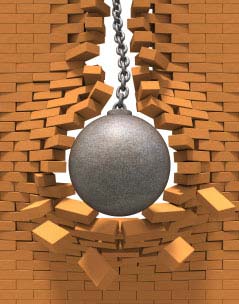 In contrast, by afternoon on the last day of the show, the booth staff is tired, the traffic is light and everyone is ready to rush to the airport. Often, the booth staff will be required to stay after the show closes and take down the booth. It is sufficient to say they most likely will not use the same care in taking the booth down as they did in setting it up. Expensive display components are often pulled, yanked and ripped down and then stuffed, smashed and crushed into shipping containers.
In contrast, by afternoon on the last day of the show, the booth staff is tired, the traffic is light and everyone is ready to rush to the airport. Often, the booth staff will be required to stay after the show closes and take down the booth. It is sufficient to say they most likely will not use the same care in taking the booth down as they did in setting it up. Expensive display components are often pulled, yanked and ripped down and then stuffed, smashed and crushed into shipping containers.
In the end, what seemed like a great way to save money, instead ends up costing you dearly. In my experience, there are a couple of ways to reduce the chances of damage during post-show dismantle. The first would be to pay an installation and dismantling company to dismantle and pack the booth. This is not always feasible, especially if you set the booth up yourself. If you cannot hire someone, then designate one or two members of your staff to stay at least one extra day to take care of dismantling the display. If these people know that they are not going to be flying out the night the show closes, they will be much more likely to take their time when packing the display.
A good double check is to have the display thoroughly inspected upon its return. If it has been improperly packed, you will want to know about it immediately so that you can have it repaired before its next use. Need an on-site tradeshow specialist there from set-up to tear-down? Let’s talk.
What to Look For in an Exhibit Design and Cost Proposal
Make sure your trade show costs fit into your budget.
One of the biggest challenges that exhibit marketers face is that their bosses give them a solid budget to do a show, but the vendors that they need to make it all happen refuse to lock into a quotation. This problem exists in just about every area of tradeshow expense.
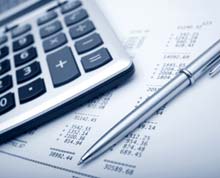 Most display companies will provide quotes for design and construction but do only “budgetary estimates” for field services. This leaves the door wide open to budget-blowing additional charges after the show. When clients ask for firm quotes for drayage, I&D, or electrical, their Account Executives deliver a well-rehearsed speech that they “cannot quote services that they can’t control,” or some other excuse their bosses have taught them.
Most display companies will provide quotes for design and construction but do only “budgetary estimates” for field services. This leaves the door wide open to budget-blowing additional charges after the show. When clients ask for firm quotes for drayage, I&D, or electrical, their Account Executives deliver a well-rehearsed speech that they “cannot quote services that they can’t control,” or some other excuse their bosses have taught them.
Also, General Services Contractors provide forms and other tools to allow trade show exhibitors to estimate their own field services costs but then insist on a credit card on file so that actual charges can be tacked on after the show. How in the heck do you budget for this?
There are exhibit companies that provide “turn key quotations” – if you absolutely cannot exceed a certain budget for a show, I would recommend that you find one. You will always have problems budgeting for hotel accommodations, travel expenses, and other show related costs, but you’ll at least be able to get the cost of your display, shipping, setup and dismantle, and utilities locked in.
We are ready to earn your business! Let’s talk.
A Perfect Tradeshow Vendor Relationship
Finding the perfect vendor to support your tradeshow program can be challenging, and there is no one-size-fits-all solution, but with the right things in mind, you can hit your target. As with any other decision, the preparation you put into it will greatly affect your level of success.
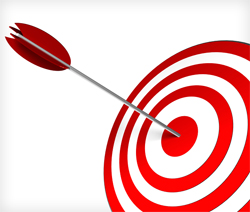 Typically, the decision for an exhibit supplier is made during the purchase of a new display. It may seem logical that the company that built the display would be the best choice to manage it. Sometimes that may be true, but often the problem is that the companies that do the best job of design and presentation are not always the best at program management. Their company’s focus might be on designing and building new exhibits, leaving program management to take a back seat.
Typically, the decision for an exhibit supplier is made during the purchase of a new display. It may seem logical that the company that built the display would be the best choice to manage it. Sometimes that may be true, but often the problem is that the companies that do the best job of design and presentation are not always the best at program management. Their company’s focus might be on designing and building new exhibits, leaving program management to take a back seat.
A good start in your search is determining how much help you will need, and the size of your program:
- Pharmaceutical companies might exhibit in over 100 shows per year, not including other events that are a large part of their face to face marketing. Auto manufacturers exhibit in 65 or more shows in the span of a few months. These types of companies usually prefer to deal with the largest exhibit companies.
- Companies that participate in fewer shows each year in smaller configurations may not get the level of service that they need from a huge exhibit company, and often end up being the proverbial “small fish in a big pond.”
In order to find the best match for your needs, give some thought to how much support you will need from your exhibit company. Some companies need only basic assistance, such as storage, preparation and minor repairs. Others rely more heavily on an exhibit company to handle the entire show including show services, graphic design, shipping, etc. Be sure to consider how important your scale of business will be to your new vendor and whether you will have access to senior management in the event that problems occur.
While experience in your specific industry is a valuable thing, use caution in looking for a company that has several other clients in your most important show, as you may find that they are stretched too thin to provide the best service. Also, there are many other factors that contribute to the success of a vendor/client relationship, but a vendor’s efforts to become the best partner should always involve a willingness to listen and adapt to the client’s preferred ways of doing business.
Are you considering changing tradeshow vendors? Let’s Talk.
Avoid Being Part of the “Boring Sea of Tradeshow Sameness”
I attend a lot of trade shows – hardware, books, electronics, men’s wear, food service, medical equipment, etc. – if there is a trade show, odds are I’ve probably been to it.  It’s part of my job. Sometimes it is a delightful part of what I do – but all too often I can walk an entire trade show floor and not see one new, inspiring idea.
It’s part of my job. Sometimes it is a delightful part of what I do – but all too often I can walk an entire trade show floor and not see one new, inspiring idea.
So far this year at the shows I have attended, I have found that most booths are professional looking and nicely designed but I often don’t remember anything the minute I move on to the next aisle. The words that come to mind: boring, formulaic, and devoid of any discernable brand personality.
Everything is perfectly planned, so why aren’t you more successful?
You have a great location for the show – right up front, with lots of traffic. You have a beautifully designed booth that is uncluttered and well-merchandised. You have great people who know that a positive attitude is essential. Yet people just keep passing by, and don’t even slow down.
Ask yourself, why should someone stop at your booth?
Think about what it is like to attend this show or conference. After three hours of seminars and speeches, the conference attendees finally get a break. They enter the exhibit hall and are greeted with hundreds of booths and the din of people chattering, music and sales presentations. They quickly walk down the aisles and select a few booths to visit. What can you do to make your booth one of those stops?
Avoid being part of this “boring sea of sameness”?
Do something different and unexpected. Break out of the “just another trade show exhibit” pack. And do it in a way that sells your product and builds your brand. I know it is much easier said than done, but here are a few breakout ideas:
- Entertainment: If it is appropriate to your overall message and product, hire a professional performer to be part of your booth but give it a twist. One small book publisher was promoting a new series of activity books include a book on juggling. They secured two booths located directly across from each other. Then they hired a two-person comedy juggler team who did a juggling show across the aisle. It was hard for anyone who saw this simple spectacle to pass them by without stopping. More importantly, it was hard to forget that the publisher had a juggling book coming out.
- Create a place to “escape” from the show. Provide a place to really relax that gives you a sales opportunity. Many exhibitors provide comfortable seating or have conference tables with chairs for meeting with prospects or set up beverage bars with stools. This just creates a place to relax and avoid a sales message. Often it creates a place for your staff to sit where no one can see them. The breakout idea is to incorporate the escape into the overall sales message. A travel incentive company who promotes South Pacific Getaways created a tropical beach getaway with a couple real palm trees, some fresh exotic flowers, beach chairs and tropical beverages. They added ambient sound with tropical birds and waves and simple lighting effects. The staff was dressed in tropical business attire and was actively engaged in greeting people and answering questions – they were not relaxing at the beach, they were smiling, attentive and working all the time. It was the most popular place at the entire show. Everyone who entered received a “Tourist Guide and Passport” that provided information about the company’s travel incentives.
- Incorporate an interactive demonstration. Make your booth interactive and experiential by turning the sales process into an active, dynamic experience. It doesn’t need to be a technological wonder and it should always involve 1-to-1 interaction between the sales staff and the prospect. Have something unusual for people to do, touch, smell or even taste. Bring your products to life with interactive demonstrations that focus on the key sales proposition. And if you do incorporate technology, make sure that it is not complete “self-service”. A medical technology company used an Interactive 3D display to allow prospects to explore their product, zoom, see internal mechanics, and even go a simulated “test drive”. The 3D simulation provided the company the opportunity to introduce key prospects to a very costly medical device but required some assistance from the booth staff so that there was a natural opportunity to start a dialog.
- Everybody wins. If you are going to have a prize drawing, come up with something more enticing than a fishbowl for the entries and a random drawing sometime in the future when most of the entrants are already left the show. Attendees remember events, games, and competitions. One clever exhibitor created an “everybody wins” contest with thousands of prizes. Instead of being just another booth with a free logoed giveaway, they enticed people into entering their booth and spinning a gigantic wheel of fortune. Even most of the people who won the smallest prize – a promotional item with the company’s name, website, and phone number – remembered the company because they won their prize.
- Open and inviting. The simplest way to increase the effectiveness of your trade show marketing is to open up your booth. Get rid of the table across the front and get rid of any barriers. Eliminate all the clutter. Design your trade show exhibit for graphic impact with large, attractive images and clean, simple and bold elements that will draw one’s attention. Add dramatic lighting and motion that welcomes people into your booth.
Have you seen any unique and enticing booth ideas that created buzz on the exhibition floor and attracted visitors?
Tradeshow Exhibit Packaging 101
Tradeshow exhibits can be packaged in a variety of ways including:
- Crates
- Skids or pallets
- Molded plastic cases
- Or no packaging at all, (pad wrapped)
Crates
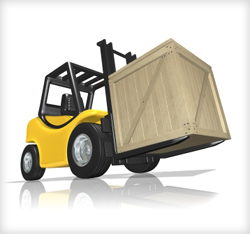 The vast majority of custom or modular trade show exhibits are packed in crates. Properly constructed crates reduce the likelihood of damage and can greatly enhance the useful life of the display. The downside of crates is the cost (usually around $1,500 each for average sizes) and the weight of the crates (around 300 pounds each). While properly designed crates will take full advantage of the space in a truck, their weight will add cost to shipping (if based on weight) and material handling. Crated displays can usually avoid the “special handling” fees charged for material handling.
The vast majority of custom or modular trade show exhibits are packed in crates. Properly constructed crates reduce the likelihood of damage and can greatly enhance the useful life of the display. The downside of crates is the cost (usually around $1,500 each for average sizes) and the weight of the crates (around 300 pounds each). While properly designed crates will take full advantage of the space in a truck, their weight will add cost to shipping (if based on weight) and material handling. Crated displays can usually avoid the “special handling” fees charged for material handling.
Skids or Pallets
Skids are essentially crates without sides or a top. They are easily moved with a forklift and are commonly used when the items are too big or bulky to fit in a crate, e.g., structural beams, truss, furniture and rolls of carpet and padding. The disadvantages to skids are that they are difficult or impossible to stack, increasing storage and shipping costs, and they do not afford the protection that crates do. Skids do reduce shipping weight when compared to crates.
Molded Cases
Manufactured exhibit systems and portable displays often pack in molded plastic cases. In some instances, the cases are compartmentalized to secure the individual parts of the display. Manufactured displays break down into smaller pieces that lend themselves to being packed into these pre-engineered containers. They are much lighter than crates and are very durable. Some displays that are packed in multiple molded cases are then stacked on skids for ease of handling on the show floor.
Pad Wrapped
Some exhibits are shipped as individual pieces without crates or skids. The items are wrapped with packing pads and loaded into moving vans just like household goods are handled. This process adds considerable time to the packing, loading and unloading process and increases the likelihood of damage, but might be worth considering in some cases.
Trade show display packaging is not as simple as it might seem, as there are many variables involved in deciding which method will be most cost-effective. Your exhibit supplier should be able to describe how your exhibit is going to be packaged and why. A detailed cost comparison of each option, accounting for all potential areas of impact on cost, might be of value before you make a decision.
Choosing a Tradeshow Display Shipping Carrier
When shipping tradeshow displays, you generally have two types of carriers to choose from:
- Van lines like Atlas, Bekins, United, Allied, etc. who also do moving of high-value products and household goods.
- Motor freight companies who move commodities, manufactured goods, etc.
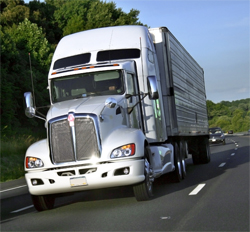 If your exhibit is palletized or crated, you have the option of shipping via van lines or motor freight. If your materials are not crated (also known as “loose” or “pad wrapped”) you must go with a van line.
If your exhibit is palletized or crated, you have the option of shipping via van lines or motor freight. If your materials are not crated (also known as “loose” or “pad wrapped”) you must go with a van line.
Motor freight companies operate on a hub system very much like the airlines, so displays that are loaded on a truck at your facility may be transferred one, two or even more times before reaching their final destination. This extra handling exposes your materials to more wear and tear and greatly increases the possibility of damage. Motor freight shipping costs are usually calculated by weight, although larger, lightweight items may be subject to a different cost calculation called “dimensional weight”.
The advantage to van line shipments is that the trucks are usually going directly from your warehouse to the convention center, so materials are less likely to be transferred from one truck to another. Moving vans use air ride trailers that cushion bumps along the way. Van lines almost always charge by the amount of floor space in the trailer that your materials require.
Total shipping cost can vary a great deal. It is generally assumed that motor freight is less expensive but that is not always the case. Check with your traffic department to see what kind of discounts your company gets from various carriers, make sure that your carrier has tradeshow specific experience and request quotes.
Make sure that your chosen carrier provides you with a way to track your shipment and verify delivery. Last, but certainly not least, be sure to ask your carrier about insurance coverage. The standard coverage that they provide is usually less than $1.00 per pound which won’t even cover the replacement of the crates, let alone the contents.
Do your homework and you can minimize cost. Or, leave the homework to us – we’ll take care of knowing where your tradeshow display is, where it needs to go, and getting everything shipped on time. With our national network of facilities and climate-controlled environments, we are always close by, so shipping your tradeshow exhibits is never a problem. Let’s talk.
Goal Setting – How to Evaluate a Successful Tradeshow
As corporate tradeshow marketing professionals, justifying participation in trade shows is one of the most daunting tasks that we face. The competition for every penny of your marketing budget is fierce and very few executives are in love with tradeshows.
 How can you convince others in your organization that shows are a good investment? How can you say that you had a successful show when there was never any measurement technique established? Like any other investment, it must start with goals. When the decision is made to exhibit in a show, you and your team need to produce a written set of measurable goals that everyone buys into.
How can you convince others in your organization that shows are a good investment? How can you say that you had a successful show when there was never any measurement technique established? Like any other investment, it must start with goals. When the decision is made to exhibit in a show, you and your team need to produce a written set of measurable goals that everyone buys into.
These may include a number of completed lead sheets, meetings with certain key prospects, the number of individual demonstrations, etc. This list, created well before the show provides a very effective guide for exhibit design, graphics, booth staffing and show activities. Everything planned for the tradeshow must be done with your goals list in mind.
During the show, you can assemble the data to report which goals were achieved and which were not.
A team meeting 2 weeks after the show will allow you to share your results and will clearly demonstrate the value of the show. This then becomes a procedure that is done for every event.
A lack of goals leaves the future of your tradeshow program totally to chance. Need help establishing your goals? Our exhibit management is based entirely on strategic planning. Let’s Talk.
Exhibit Acronyms – What is a Trade Show RFP?
RFP is an Acronym for Request for Proposal
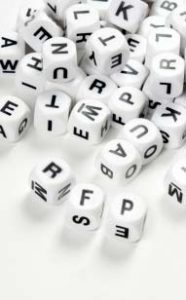 This is one of the few tradeshow exhibit industry terms that is also pretty common in other areas of business. In a nutshell, it means that your company has a need to buy products or services and you’d like to invite prospective vendors to submit proposals. RFPs can be sent out for something as simple as a rental backwall display or as elaborate as complete multi-year management of a hundred shows per year tradeshow program.
This is one of the few tradeshow exhibit industry terms that is also pretty common in other areas of business. In a nutshell, it means that your company has a need to buy products or services and you’d like to invite prospective vendors to submit proposals. RFPs can be sent out for something as simple as a rental backwall display or as elaborate as complete multi-year management of a hundred shows per year tradeshow program.
Once received, evaluation of submitted proposals can be difficult and time-consuming. As such, the number of companies that you invite should be limited to 3 – 5.
The basic RFP format is to provide:
- An overview of your company.
- A summary of your needs.
- An outline of how and when proposals should be submitted.
In order to make the process as efficient as possible, it is best to provide information that is concise. The key to dealing with responses in a timely fashion is to direct submissions so they are as similar in format as possible.
If you intend to request custom exhibit designs from bidders, keep in mind that designs are presented in a variety of formats from renderings mounted on boards to web-based video productions. You should clearly communicate the presentation format you prefer. When requesting designs, providing a budget number will make the final evaluation process much more productive.
You should also provide a format for the cost portion of the proposals. This can be in the form of a spreadsheet included in your RFP to be filled out and returned, or even as simple as an itemized list. Including this information helps to clearly describe what cost elements are to be included in the proposal. Things like carpet, electrical service, vacuuming, floral or technical support are not always part of the RFP process.
The bottom line? Give prospective vendors enough information to put together a proposal that is complete and in a format that makes it easy to compare. Time spent editing and refining your RFP documents can result not only in significant time savings when the time comes to review submissions, but also more quality in responses.
Need Exhibit Management for your trade show? We are ready to earn your business. Let’s talk.
Archives
- July 2021
- June 2021
- May 2021
- April 2021
- October 2018
- September 2018
- August 2018
- July 2018
- June 2018
- May 2018
- April 2018
- March 2018
- February 2018
- January 2018
- December 2017
- November 2017
- October 2017
- September 2017
- August 2017
- July 2017
- June 2017
- May 2017
- April 2017
- March 2017
- February 2017
- January 2017
- December 2016
- November 2016
- October 2016
- September 2016
- August 2016
- July 2016
- June 2016
- May 2016
- April 2016
- March 2016
